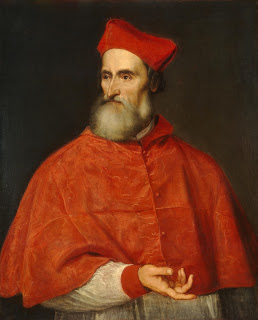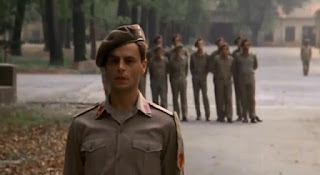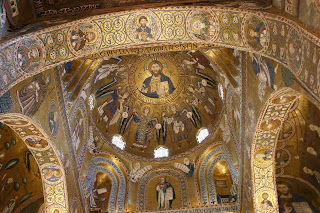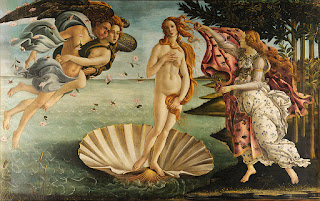Lucrezia’s lover helped with the development of modern Italian
 |
| Titian's portrait of Pietro Bembo, painted in around 1540, when the poet was 70 years old |
He is probably most remembered for having an affair with
Lucrezia Borgia while she was married to the Duke of Ferrara and he was living
at the Este Court with them. His love letters to her were described by the
English poet, Lord Byron, centuries later, as ‘the prettiest love letters in
the world.’
As a boy, Bembo visited Florence with his father where he
acquired a love for the Tuscan form of Italian which he was later to use as his
literary medium. He later learnt Greek and went to study at the University of
Padua.
He spent two years at the Este Court in Ferrara where he
wrote poetry that was reminiscent of Boccaccio and Petrarch.
It was when he returned to the court at Ferrara a few years later
he had an affair with Lucrezia Borgia, the daughter of Pope Alexander VI, who
was at that time the wife of Alfonso I d’Este. The love letters between the pair to which Byron referred are now in the collection of the
Biblioteca Ambrosiana in Milan.
Byron greatly admired them when he saw them
there in 1816 and also claimed to have managed to steal part of a lock of
Lucrezia’s hair that was on display with them.
Bembo went to live in Urbino where he wrote his most
influential work, a prose treatise on writing poetry in Italian, Prose della
vulgar lingua. His writing was later to revive interest in the works of
Petrarch.
Bembo worked as a historian and librarian in Venice for a
time before going to live in Rome, where he took Holy Orders. He was made a
Cardinal by Pope Paul III in 1539.
He died in Rome in 1547 at the age of 76.
 |
| The Castello Estense in Ferrara, where Bembo was a guest of Alfonso I d'Este and Lucrezia Borgia |
The Castello Estense in Ferrara, where Lucrezia Borgia lived
after her marriage to Alfonso I d’Este and where Pietro Bembo was a guest, is a
moated, brick built castle in the centre of the city. It is open to the public
every day from 9.30 till 5.30 pm apart from certain times of the year when it
is closed on Mondays. For more details and ticket prices visit
www.castelloestense.it.
Travel tip:
The Pinacoteca Ambrosiana in Piazza Pio XI in Milan was
established in 1618 to house paintings, drawing and statues that had been
donated to the Biblioteca Ambrosiana, the library founded in the same building
a few years before. In addition to works of art, the museum keeps curiosities
such as the gloves Napoleon wore at Waterloo and a lock of Lucrezia Borgia’s
hair, in front of which famous poets such as Lord Byron and Gabriele D’Annunzio
spent a lot of time drawing inspiration. Pietro Bembo’s letters to Lucrezia are
also in the museum’s collection. Visit www.leonardo-ambrosiana.it for more
information.
Home
Home





